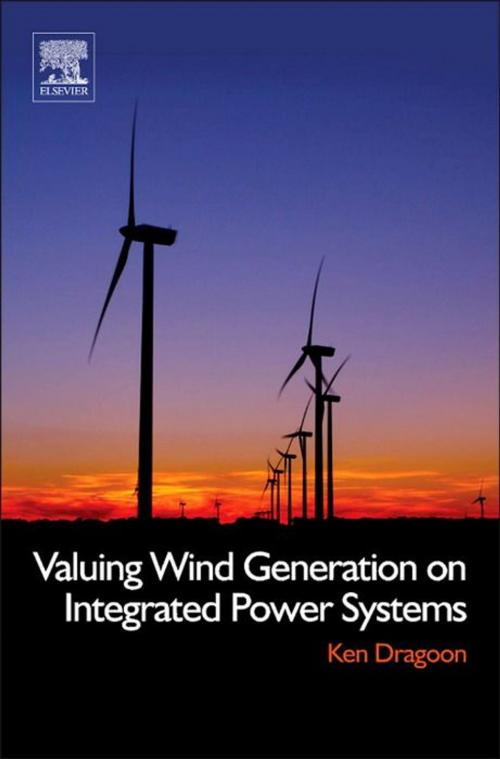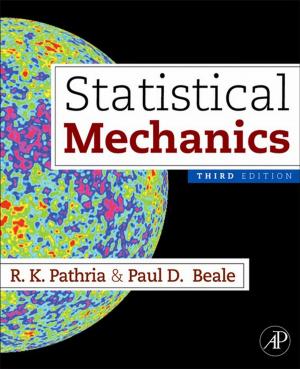Valuing Wind Generation on Integrated Power Systems
Nonfiction, Science & Nature, Technology, Power Resources| Author: | Ken Dragoon | ISBN: | 9781437778533 |
| Publisher: | Elsevier Science | Publication: | September 28, 2010 |
| Imprint: | William Andrew | Language: | English |
| Author: | Ken Dragoon |
| ISBN: | 9781437778533 |
| Publisher: | Elsevier Science |
| Publication: | September 28, 2010 |
| Imprint: | William Andrew |
| Language: | English |
Wind powered generation is the fastest growing energy source in the United States due to a combination of economic incentives, public preference for renewable energy as expressed in government policies, competitive costs, and the need to address global warming. The economic consequences of the relative variability and lower predictability of wind generation are not easily captured in standard economic analyses performed by utility planners. This book provides utility analysts and regulators a guide to analyzing the value of wind generation in the context of modern power systems.
Guiding the reader through the steps to understanding and valuing wind generation on modern power systems, this book approaches the issue from the various, current perspectives in the US. These include utilities that are still primarily vertically integrated power providers and systems dominated by independent system operators (ISOs). Outlined here are the basic procedures in a wind valuation study, described with enough detail so that analysts spanning a range of resources and sophistication can reasonably undertake a competent study. Descriptions of studies performed by other utilities are also provided, explaining their specific approaches to the fundamentals. Finally, it includes a short section on power systems that utilize relatively large fractions of wind, and how operating procedures and valuing techniques may need alteration to accommodate them.
• Reviews operating challenges that large amounts of wind power present to power systems operators
• Outlines alternative approaches to quantifying the systems services necessary to accommodate the wind
• Explains how economic analyses of wind generation are competently performed
• Describes how to represent wind generation in computer models commonly used by electric utility planners that may not be specifically designed to incorporate wind generation
• Reviews methods used by some select utility companies around the United States
• Touches on key European issues involving relatively high levels of wind generation
• Written at the level of the utility planner, assuming a basic understanding of economic dispatch of generators and elementary statistics
- Outlines the role of wind forecasting in wind valuation studies
- Evaluates the importance of estimating wind generation to meet peak demand
- Researches how the market structure effects the value of wind energy
- Discusses power systems that utilize relatively large fractions of wind power
- Highlights the operating procedures that can enhance the value of wind generation
Wind powered generation is the fastest growing energy source in the United States due to a combination of economic incentives, public preference for renewable energy as expressed in government policies, competitive costs, and the need to address global warming. The economic consequences of the relative variability and lower predictability of wind generation are not easily captured in standard economic analyses performed by utility planners. This book provides utility analysts and regulators a guide to analyzing the value of wind generation in the context of modern power systems.
Guiding the reader through the steps to understanding and valuing wind generation on modern power systems, this book approaches the issue from the various, current perspectives in the US. These include utilities that are still primarily vertically integrated power providers and systems dominated by independent system operators (ISOs). Outlined here are the basic procedures in a wind valuation study, described with enough detail so that analysts spanning a range of resources and sophistication can reasonably undertake a competent study. Descriptions of studies performed by other utilities are also provided, explaining their specific approaches to the fundamentals. Finally, it includes a short section on power systems that utilize relatively large fractions of wind, and how operating procedures and valuing techniques may need alteration to accommodate them.
• Reviews operating challenges that large amounts of wind power present to power systems operators
• Outlines alternative approaches to quantifying the systems services necessary to accommodate the wind
• Explains how economic analyses of wind generation are competently performed
• Describes how to represent wind generation in computer models commonly used by electric utility planners that may not be specifically designed to incorporate wind generation
• Reviews methods used by some select utility companies around the United States
• Touches on key European issues involving relatively high levels of wind generation
• Written at the level of the utility planner, assuming a basic understanding of economic dispatch of generators and elementary statistics
- Outlines the role of wind forecasting in wind valuation studies
- Evaluates the importance of estimating wind generation to meet peak demand
- Researches how the market structure effects the value of wind energy
- Discusses power systems that utilize relatively large fractions of wind power
- Highlights the operating procedures that can enhance the value of wind generation















